Preserving Your Family Tree
Gaming for Ancestors
August 7, 2012 by ramona
Filed under Articles, Family History, General Tips, Latest News, Preserving Your Family Tree
 If you are looking for a fun and unusual way to record your family tree you might want to consider playing Family Village.
If you are looking for a fun and unusual way to record your family tree you might want to consider playing Family Village.
Family Village is a facebook game that allows family history hunters to build a family tree in game format. The premise of the game is to invite relatives to play and create a database of ancestors along with living family members by entering their information into the game.
How Does this Create a Database of Ancestors?
The game allows you to go on quests and build a village by entering all the usual types of genealogical information about your ancestors such as birth, marriage and death documents and photos. It allows you to enter immigration information, maps and newspaper articles as well as adding occupations. You can even build avatars of your ancestors.
In their vision statement game developer Finium says that their purpose in developing the game is to provide meaningful games that will aid family tree hunters in preserving their family history.
Family Village is a great way to connect with relatives and get the whole family involved in genealogy.
Pinning your Family Tree
July 14, 2012 by ramona
Filed under Articles, Family History, Latest News, Preserving Your Family Tree
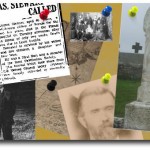 Well it certainly did not take long for family tree fanatics to make use of social media “pinning” sites.
Well it certainly did not take long for family tree fanatics to make use of social media “pinning” sites.
If you are new to social media here is what you need to know about pinning. Pinning is a visual way of sharing your interests via a virtual pin board. You can create boards based on a singular theme such as genealogy, family tree, family history etc. Ultimately, what these sites do is share links through images. One way to think of it is as a visual bookmark.
Pinning for Genealogy
Pintrest
Pintrest can be used as a fantastic tool for organizing your genealogy, sharing resources and following others with like interests. The only catch is that in order to use Pintrest you must first receive an invitation.
Pinspire
If you do not have an invitation to Pintrest, you can try out its identical twin Pinspire. Pinspire is identical to pintrest with one exception…no invitation required.
If you want to check out more pinning sites, Minglewing, Piccsy and Storify are good places to start.
Uencounter.me
The newest kid on the pinning block is Uencounter.me a pinning site with a purpose. Uencounter.me is a mapping site that focuses on letting the user built a visual map of their family tree.
Building a visual map of your ancestors can be a very helpful tool for your family history research. However, the possibilities for information sharing with this type of application are easy to see.
Imagine the map as a resource for finding ancestors by location. Although other search sites come close, if you are not familiar with the geography of the area you are searching… it is easy to become confused and miss something.
For example:
My line of McCallum’s hail from Lanarkshire Scotland can be found in the census at Firth, Carstairs and Carnwath. While that may not mean much on a data screen, having a visual of just how close those communities are, helps give some perspective to your search.
Using Uencounter.me
The process starts by bringing up the map and asking you to zoom into your area of interest. You can also pin a place by adding the address.
Drop down menus let you select:
- Type of Encounter: Genealogy,
- Dates to and from: a date range from the present to the year zero,
- People Here Are / were: ancestors
- This pin relates to: an ancestor
- Specifically: Birth, Marriage, Death, other
For those of you who want to pin live relatives do not worry as the site gives the option for a privacy setting on an individual basis. As you move forward to the next step you will get a pop up box that allows for notes, you can even add photos.
While Uencounter.me shows all the earmarks of a superior genealogy tool, a searchable name function would make this an invaluable free resource for genealogists everywhere.
Need to learn more about finding your ancestors through the geography of genealogy check out Genealogy Beginners lesson on Searching by Place. Available with your 30-day free trial membership.
Donating Genealogical Records
June 28, 2012 by ramona
Filed under Articles, Latest News, Preserving Your Family Tree
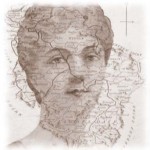 Have no doubt that your family tree research has value beyond the current generations of your own family.
Have no doubt that your family tree research has value beyond the current generations of your own family.
Donating your family history to a local historical or genealogy group is an excellent way to make certain all of your hard work is put to good use. Local Historical Societies and Genealogy groups have a stake in preserving your records for future generations.
How to Donate Your Family Tree
If you are considering donating your family tree research the best place to start is by contacting your local library. Your local library can help you identify the archives that are best geographically suited to receive your family’s story.
Generally, community groups are interested in local reference records. However, they may have ties to other groups with broader interests such as provincial or state archives.
When donating a rather widespread family tree it may be worth considering breaking it into smaller portions focusing on specific locations.
While it is normal in a large family tree to have a significant geographical spread with ancestors coming from all corners of the globe, a local group may have limited space. Therefore, it is reasonable that they may not want to house large documents unless they are completely location specific.
What to Include with Your Donation
Along with your family tree templates or pedigree charts, you should include either originals or copies of:
- Primary and secondary source documents
- Old photos
- Vital Records
- Newspaper clippings
- Maps
Donating your family tree data is one of the best ways of sharing your genealogy and contributing to the preservation of history in your community. Not only does it help preserve your research for future generations it may be key to helping another family history researcher to break down a brick wall.
However, before you donate be sure not to part with any original items you or other members of your family may want to keep. Lastly, make certain that all of your research conforms to The Big Five Genealogy Standards and Guidelines.
To learn more about genealogical standards sign up today for Genealogy Beginner’s 30-day free trial and receive Eight, Step-by-Step Weekly Lessons You Can Do At Your Own Pace. Starting with Lesson 1: Genealogy Standards And Guidelines.
Preserving Family History: The Creative Family Tree
June 1, 2012 by ramona
Filed under Articles, Family History, Latest News, Preserving Your Family Tree
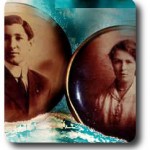 Genealogists and Family Historians are coming up with some wonderfully creative ways to document and share family trees. From video documentary to fine art pieces, the ways we are honoring our ancestors is becoming more and more creative.
Genealogists and Family Historians are coming up with some wonderfully creative ways to document and share family trees. From video documentary to fine art pieces, the ways we are honoring our ancestors is becoming more and more creative.
Video Documentary Family Tree
Documenting your family tree can become a visual auditory experience with the help of a company called Reel Tributes.
The inspiration for the company came with the passing of founder David Adelman’s Grandmother Eunice. Wanting to express her story, Adelman and his mother put together a video that documented their family history. The film tracked their family through photographs and stories beginning in 19th century Russia to their current life in San Francisco.
Emotionally powerful, the film created such a strong response that it motivated Adelman to start the company. Reel Tributes provides a way for families to memorialize their histories in a distinctive format.
As part of their service, Reel Tributes uses:
- Interviews
- Home videos
- Photographs
- Archival footage
Set to music and narrated throughout, the TV quality documentary films produce an overall effect that is eloquent and compelling.
Facebook Family History Book
As of 2011, Facebook had over 5 million users that is one in every 13 people. It is no small surprise that more and more family historians are using the social network to pay homage to their ancestors.
The new timeline has a beautiful display that allows families to come together and share information in real time; no matter how distance may separate them. Taken as a whole, a facebook page works as an interactive family history book. The unique format makes it possible to document your family’s story with photos, family legends, historical records, recipes and more. It may even lead you to finding new cousins who can help you grow and enrich your family tree.
Ancestral Art
Writer Thomas Merton said, “Art enables us to find ourselves and lose ourselves at the same time”. Most genealogists would probably agree that those words ring equally true in describing the experience of tracing our roots.
One of the most touching tributes to family history I have seen came in the form of a collage. Using scraps of material from old garments, copies of photographs, records and old letters the artist created a pictorial representation of their family’s journey from Czechoslovakia to Canada.
Creating a collage is a wonderful way of presenting a visual story of your family history.
Better yet, it is so easy you do not need to be a professional artist to make one. All it takes is some good quality copies of photos and documents as well as a few art supplies and you will have not only a visual reference but also a gorgeous new piece of art for your wall. A collage also makes a wonderful gift and it is simple to have prints made from your original.

Of course, all of this starts with those first steps of learning genealogy.
Genealogy Beginner can get you started with a free one-month subscription that includes Eight, Step-by-Step Weekly Lessons, Personal Support from Our In-House Genealogists and a starter kit complete with family tree charts, research tracking forms and more.
Family Heirlooms: Preserving the Past
May 20, 2012 by ramona
Filed under Articles, Family History, Latest News, Preserving Your Family Tree
 Those interested in climbing their family tree often have a passion for the stories and keepsakes passed from generation to generation.
Those interested in climbing their family tree often have a passion for the stories and keepsakes passed from generation to generation.
It is not surprising that they frequently find themselves the guardians of traditions, stories and irreplaceable family heirlooms. Family heirlooms come in many forms, from jewelry to old diaries to 100-year-old garments like christening gowns.
Being the keeper of the family treasures is a big responsibility and rarely taken lightly. While some heirlooms are easily cared for, others such as very delicate old textiles like quilts, needlework pieces, dolls and garments require very careful handling.
Old Textile Do’s and Don’ts
Caretakers with the best of intentions sometimes damage old textiles through lack of knowledge. The following list will help family historians in following the first rule of caring for your family’s textile keepsakes…do no harm.
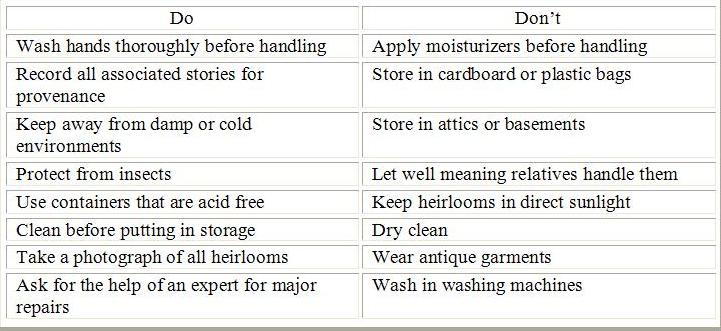
Cleaning Old Textiles
Old textiles are often weakened through time. When cleaning never wring, scrunch or hang them as they may tear easily. Always lay them out flat to dry and wrap them in acid free tissue paper or a clean white cotton sheet before storing. It is very important that heirloom textiles are always stored flat and never crushed.
Wool
Before you clean any antique woolen garment, it is a good idea to test it for color fastness. To do this simply apply a little water then squeeze it in between some paper towel. If the color bleeds, you will need to give it a vinegar treatment to stabilize the dye. To do this, soak the garment in a mixture containing one gallon of water to one tablespoon of white vinegar for five to ten minutes. To dry the garment place it between a couple of thick absorbent bath towels, press out excess moisture and lay flat to dry.
Cotton
Cottons have a tendency to yellow with age and shrink if not dried properly. Before attempting to wash any cotton garment or textile, try cleaning with a soft brush and a low suction vacuum. When cleaning cotton garments it is best to treat stained areas with hydrogen peroxide rather than to attempt cleaning the entire garment. Before attempting, any major restorations consult a professional.
If you’re the guardian of your families textile treasures Genealogy Beginner recommends reading “The Textile Conservator’s Manual”, by Sheila Landi available from Amazon.com.
Family Heirlooms: 19th Century Photographs
May 13, 2012 by ramona
Filed under Articles, Family History, Latest News, Preserving Your Family Tree
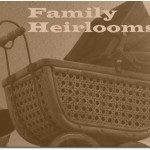 Often making a journey across time and continents, family heirlooms are a solid physical connection to a very personal ancestral past that tend to hold memories, which resonate deep within us.
Often making a journey across time and continents, family heirlooms are a solid physical connection to a very personal ancestral past that tend to hold memories, which resonate deep within us.
Those who have held their great-grandmothers wedding dress or read the letters written home from a relative who served in a war understands the deep link felt across the generations. One truth shared by all family treasures is that… it is the stories that accompany them that give them the greatest meaning and tie us to our generations past.
Sadly, sometimes the objects remain while the stories are lost. Genealogically this can be a great opportunity to discover a new family history story or ancestor. If you have, an heirloom that has become a bit of a mystery an investigation may be in order. The type of investigation you conduct will likely depend on the object you are investigating. While family heirlooms are made up of every object imaginable, from jewelry to family bibles. Often the photographs pose the most problems…particularly very early ones.
19th Century Photographs
The first step in solving the puzzle of a mysterious early period photograph is deciding what type of photo you have. A difficult task with these three photo types of the 19th century.
Daguerreotype:
A good way to decide if it is a Daguerreotype is to hold a piece of paper over the surface and see if the image is reflected in reverse. Additionally, Daguerreotypes are often tarnished around the edges of the picture. If it is a Daguerreotype is will date from 1839-1860.
Ambrotype:
Ambrotypes are often hand tinted. To figure out if what you have is an Ambrotype carefully remove it from the case and hold it up to the light. Ambrotypes were printed on glass so you should be able to see through it. Another clue is to look for any cracks or peeling as another hallmark of the Ambrotype is the black paint used to process the picture. Ambrotypes date from 1854-1865.
Tintype:
It can be hard to tell the difference between a Tintype and an Ambrotype. The only way to be certain is to hold a magnet near it. Tintypes were made of a very thin iron and should be attracted to the magnet. Tintypes were common during the civil war and date from 1856-1920.After you have determined the type of photograph, you may need to track down its geography. A hint you may find helpful, is through the clothing worn by the people in your photograph. Clothing, accessories and hairstyles may be great hints for women, while uniforms can be a dead give away for men. All can help you to zero in on the country or origin. Once that is determined, the next step is to search for period photographers from that country. Several indexes by country list photographers so you should not have too much trouble once you know the photo type.
Additionally, some early photographers may have developed an identifiable style that can be helpful in tracking them down. For example, there may be preferences in the manner which subjects are posed (seated or standing), or backgrounds and props used may offer some clues. This process can be very time consuming, as it is a matter of searching and comparing your photo to the ones found in your search. Even at that, be cautious about your conclusions.
Solving the mystery of your family heirloom can be fun and rewarding. Better yet, it may help flesh out your family history, add new branches to your family tree and fill out another space on your family template. All good reasons to start your detective work A.S.A.P.
If you have a mystery, post it in the Ask A Genealogist forum, or share with us how you solved a mystery on the Discovery Panel and tell us how you did it. Genealogy Beginner would love to hear about your family treasures and heirloom stories.
A Graphic Family in History
April 16, 2012 by ramona
Filed under Articles, Family History, Latest News, Preserving Your Family Tree
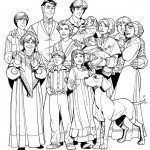 Family History books come in all shapes and sizes however I am not sure many genealogists ever expected to see one in the form of a graphic novel. The Loxleys and the War of 1812 is a book that records a monumental chapter in Canadian history through the premise of a family history.
Family History books come in all shapes and sizes however I am not sure many genealogists ever expected to see one in the form of a graphic novel. The Loxleys and the War of 1812 is a book that records a monumental chapter in Canadian history through the premise of a family history.
The idea to use a family tree to tell the story of the War of 1812 belongs to British expat, Alexander Finbow. Digging deep into letters and journals, Finbow researched families living in Upper Canada during this period in history. However, unable to settle on a single family the “Loxley’s” became a fusion of stories from several pioneering families.
The graphic novel is a factual telling of the war through the “Loxleys” a fourth generation Canadian family who are located in the Niagara Peninsula. Having left America following the American War of Independence, readers follow the family through the journals of “Aurora Loxley” who diligently records the involvement, trials and struggles of her family as they are thrust back into violence when America declares war on Britain and the Canadas.
A collaboration of artists, writers and historians The Loxleys and the War of 1812 is published by Renegade Arts Entertainment, written by Alan Grant with a summary by Canadian Military historian Mark Zuehlke, with illustrations by Claude St. Aubin and Lovern Kindzierski.
Although genealogically the story is indeed fictional, the concept of bringing a family history book to life through a graphic novel is intriguing and promises to be an enjoyable read for all interested in history and genealogy.
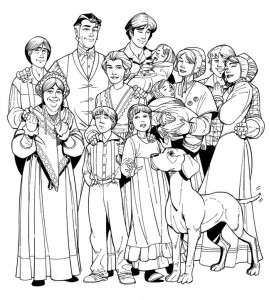
Image Courtesy of Claude St. Aubin with permission from Alexander Finbow
Publishing Your Family History Book
February 18, 2012 by ramona
Filed under Articles, Family History, Latest News, Preserving Your Family Tree
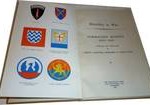 Early in January, our facebook friends told Genealogy Beginner about the exciting genealogy projects you had planned for 2012. Top among your projects was publishing your family history book.
Early in January, our facebook friends told Genealogy Beginner about the exciting genealogy projects you had planned for 2012. Top among your projects was publishing your family history book.
Genealogy Beginner thinks publishing your family history is an outstanding goal and we want to support you in your efforts. With that in mind, here is some information that will bring you closer to reaching it.
Publishing your family history book is a big step. There is more to it than simply sending it to the printer. Before you get to that place, you need to consider a couple of important points.
Copyright
Copyright your book! Even though, under the Berne Convention you automatically own copyright. Copyrighting your book it will guarantee your intellectual property rights and protect your from copyright infringement. If you are thinking that it sounds like a bit of a hassle, do not worry copyright it is a lot easier than you may have imagined.
In order to copyright, your book you will need to send three items in to the office where you wish to register.
The fees will depend on the office (country specific), to which you are sending them and it is important that you send all items in the same envelope. There are several offices and a quick Google search will point them out to you.
Do you know your options when it comes to publishing?
You have several options when it comes to publishing your family history book. Genealogy Beginner recommends the following two choices.
Self Publish
Self-publishing is probably your best choice if your book is for yourself. Self-publishing is as easy as printing out at home or sending your work in to a local printer. If you plan to print out at home, three ring binders work well for expanding your work later. However, having your work professionally printed will give you the option of having the printer do the binding.
Work with an On-Demand publisher.
On-demand publishing is a great choice if you want to offer your book for sale, either to the public or within your family. Probably the greatest benefit to on-demand publishing is that it is very budget friendly as there are no up-front costs to you.
Of course, you can choose to go with a commercial publisher or look into offering your family history book as an eBook. It will all depend on your objective.
For a list of On-demand publishers, join us on the forum “Genealogy in General”. If you have already published your family history book Genealogy Beginner wants to know about it. Stop by, join the discussion and share some tips with other genealogy beginners.
Image Credit: Inkyphoto via Photobucket
Writing Your Family History Book
January 28, 2012 by ramona
Filed under Articles, Family History, General Tips, Latest News, Lesson 3 Articles, Preserving Your Family Tree
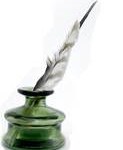 Early in January Genealogy Beginner asked our facebook friends what exciting genealogy projects you had planned for 2012. Top among your answers were writing and publishing a family history book.
Early in January Genealogy Beginner asked our facebook friends what exciting genealogy projects you had planned for 2012. Top among your answers were writing and publishing a family history book.
Genealogy Beginner thinks that is an excellent goal. To help support you in reaching it we decided to dedicate some time to providing information that will bring you closer to achieving it.
Getting Started on Your Family History Book?
Perhaps the hardest thing about writing a family history book is simply getting started. Your first step should be to decide who your family history book is for? Knowing this will help you resolve what form your family history book will take.
- Will it be a surname book, a book for yourself, are you planning it as a gift for other family members or did you want to offer it more publicly?
- Will it trace the line of a single family or are there going to be interconnecting trees?
- Do you have a set number of generations you wish to include?
- Are you dedicating it to a single ancestor?
- Will you be including graphic data such as family photographs and scans of source documents?
- Will you be collaborating with another family member?
- Will you be including stories, family lore or famous family recipes?
With the above questions answered, you will have a better idea of the type of book you want to write.
Memoire: An account of the personal histories based on the memory of the author.
Biography: A focus on one specific ancestor.
Narrative: The story of a group of ancestors or a complete family line.
Knowing the answers to these questions before you begin will help you with organizing the project. More importantly, it will keep you from becoming overwhelmed and make your project run smoothly from start to publish.
Note: Genealogy Beginner suggests, that you begin to write your book before your research is complete; for the reason that, if you are like most other genealogy researchers…your research will never be finished.
Organizing your Family History Book
Once you have settled on the form your book will take, the next logical step will be to organize your collected data. You can take several approaches to this process.
Step one:
Organize within the chronological order of your family tree beginning with the current generation. On the other hand, you may want to begin with the earliest generation you have found and work your way back to the current generation. Working in chronological order will help work through any holes you may have in your research.
Step Two:
Write a tentative outline for your story. You can include as much or as little detail as you wish, the point to remember here is to remain flexible, as you are likely to do a lot of editing along the way.
Step Three:
When you have decided on your organizational process, begin making files for each of your subjects. For instance, a master file for each family group and sub files for the individuals within the group.
Each sub file should contain:
- Cards, letters, photos, newspaper clippings and other memorabilia for that individual
- Notes on interviews
- Notes on social history (What was life like in their time, were there any historical events taking place near them etc.)
Write Your Family’s Story
Here are some basic writing tips to help get you started and keep you going.
Draw up a writing schedule
Life gets busy and when it does, it is easy to put off your project. Drawing up a writing schedule and sticking with it will help you keep your project from being placed on the back burner.
Write a Draft
All writers know that every story has a beginning, middle and end. When you begin to write, start with a draft that outlines this. Do not worry about grammar and punctuation at this point just get your outline down on paper. Later as you start your rewrite, you can make corrections and begin to include detail. Final corrections can be made when you edit.
Final Notes:
Some family members may be more private while others may simply feel strongly that some stories ought to be omitted altogether. For these reasons, the following two points should be well remembered when writing your family history.
- Be careful about including any stories that could be upsetting to your family.
- When writing your family history book keep detailed information about living ancestors out of it, unless you have their written permission to include it.
Once you have finished writing your story and before you publish, it is time to edit. Join us on the forum Genealogy in General for your final edit checklist. Don’t forget to check back with us next week for Genealogy Beginners article on publishing your family history book.
Image Credit : roonil_waslib via photobucket
A Sustainable Family Tree
January 8, 2012 by ramona
Filed under Family History, Latest News, Preserving Your Family Tree
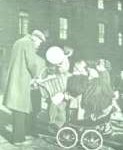 This week Genealogy Beginner attempts to unite our past and present…with hopes for a brighter future…through the wisdom of our ancestors.
This week Genealogy Beginner attempts to unite our past and present…with hopes for a brighter future…through the wisdom of our ancestors.
No one who has spent time needed to make a family tree will deny the fact our ancestors had it rough, eking out a living through total self-sufficiency. From cotters in an old world – to – settlers in a new one, it was imperative to survival that they be conservationists by nature.
Before it became a socially conscious practice or a global concern, Great, Great Grandma and Grandpa were reducing and reusing as part of their daily lives. Sustainability was not a catch phrase; it was an accepted part of life.
Perhaps their reasons for recycling are different from our own. History, shows recycling is customary in times of shortage. Even in this, there are similarities between their time and ours…the common theme; long- term survival.
How eco friendly were our ancestors?
A Family Tree of Conservationists
Water is a good place to start. In the simplest possible terms water had to be conserved as wells could run dry.
Rain Barrels:
– Collected rain water from runoff
– Stored in barrels to use at a later date
– Was used to do laundry
– Rainwater was considered excellent for washing hair (makes it very soft)
Our ancestors were also wise when it came to keeping their water sources clean and healthy. They knew how important it was to keep pollutants away from the family’s water supply. Thus, they positioned livestock and other contaminants down hill from the well.
A Greener Genealogy
We have also learned lessons from our forefathers on sustainable energy uses in our natural environment. Ancient Chinese engineer Tu Shih, immortalized in a text from 31 AD, invented a water-powered reciprocator used in the casting of iron for agricultural equipment. The short story, casters and smelters used running water to operate billows long before we developed hydroelectric dams.
Repurposing Family History
From Imperial Byzantium, throughout the Roman Empire, sailing past medieval Vikings to Victorian England and into the Great Depression; archeological and historic record proves recycling reined supreme within our predecessor’s lifetimes.
The Byzantine
In the heart of the Byzantine is the ancient city of Sagalassos (current day Turkey) where archeologists found evidence of an intensive glass recycling program.
The Romans
The Romans recycled metal turning bronze coins into statues. In addition, Romans used recycled water for their sewer systems.
The Vikings
Famed marauders immortalized in Saga, we do not think of the early Norse as being particularly eco friendly…or even friendly. However, in an 11th century site located in the city of York, England, is evidence of a makeshift recycling center. True to the Viking spirit, the site was for the reprocessing of weapons after battle.
The Victorians
The most avid recyclers, ancestors of the Victorian era provide the best examples of reduce, reuse and recycle.
· Historians commonly have a difficult time finding examples of Victorian clothing because garments were passed down from lady to maid to daughter and finally given to second hand shops.
· If your Victorian ancestors kettle had a leak it would be repaired, worn bed sheets were “sides-to-middled” (a method of repair), in addition worn collars and cuffs of clothing would be turned and the good side used.
An unsung hero of recycling, the familiar Rag and Bone Man, would go from home to home collecting:
Rags, which he would sell:
-To make Shoddy Wool (used to make military uniforms)
-Have turned into rag paper
-Be used to enrich soil for growing hops
Bone, which he would sell:
-For making glue
The Great Depression
During the depression, things needed repairing not replacing. The depression heralded a culture of making items we could not buy and everything from lumber to wire to old nails were repurposed.
Growing our Roots
With the current popularity of rooftop/balcony gardens and the backyard chicken coop it seems that we have come full circle. It would be honest to say our precursors made a practice of these things either because they did not have easy access to a grocer or because they could not otherwise afford a healthy diet. Anyone who has seen the price of organic eggs may agree, we have not come so far from our ancestors after all.
Join us on the Forums, “The Discovery Panel” for a rare peek into the past where Genealogy Beginner shares some green cleaning tips from a Victorian Era cleaning Manual.
Image Credit: des_enzano via Photobucket
